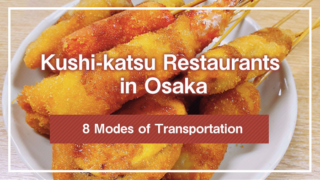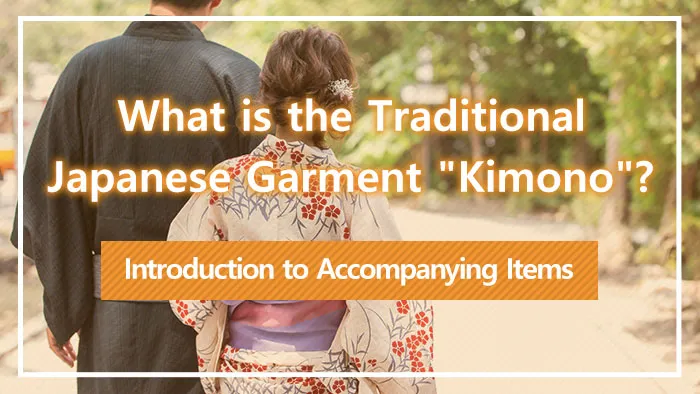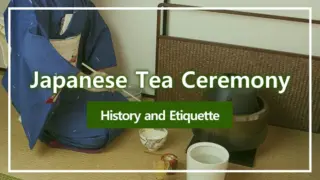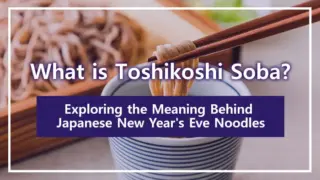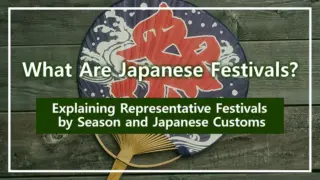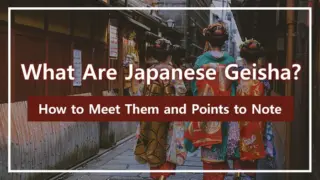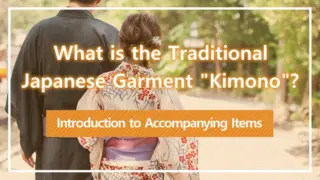The Kimono, Japan’s traditional garment, is a national costume that has inherited a long history and culture. Unlike Western clothing, it features a unique structure in which a single bolt of fabric is sewn together in straight lines and completed by fastening it with an Obi. There are various types depending on the occasion and social position, such as Furisode, Tomesode, Homongi, and Yukata, each showing diverse expressions through combinations with accessories like Obi, Zori, and Geta.This article provides detailed explanations of the history of Kimono, differences from Western clothing, representative types, and items used together with Kimono.
1. What is the Traditional Japanese Garment “Kimono”?
Kimono is Japan’s traditional garment, a national costume that has been passed down through a long history. Rather than being tailored three-dimensionally like Western clothing, it features a flat structure made by cutting and sewing a single bolt of fabric, and is completed as a garment by fastening it with an Obi. Since it can be returned to fabric when untied, it has high reusability and can be considered an environmentally conscious garment.
Due to its simple shape, pattern expression through dyeing and weaving has developed, concentrating the seasonal nature and Japanese aesthetic sense. There are various types such as Furisode, Homongi, and Komon, and the charm lies in the fact that the attire changes depending on age and occasion. Depending on the combination with the Obi and accessories, the impression changes greatly, and it is cherished in modern times as a cultural symbol that reflects the individuality and sensibility of the wearer.
1-1. History of Kimono
The word “Kimono” originally meant “thing to wear” and once referred to clothing in general. After the Meiji period when Western clothing entered Japan, the recognition of “Kimono = Japanese clothing” became established, and it is now used as a term referring to Japanese traditional garments.
There are various theories about the origin of Kimono, but the form close to the modern style is said to have begun in the Heian period. At that time, colors and patterns were strictly divided according to status and position, and the Junihitoe, in which noble women layered multiple Kimono, is famous. The culture of showing aesthetic sense and education through the color arrangement of the hem also spread.
Later, in the Edo period, Kimono also spread among common people, and even with restrictions on materials and colors, they expressed individuality through Obi tying methods and patterns. Entering the Meiji period, Western clothing was encouraged in official settings due to Westernization policies, and gradually Western attire spread, but Kimono was still widely used as everyday wear until after the war. Currently, it is worn as formal wear on special occasions and celebratory days, and is passed down as a symbol of Japanese culture.
1-2. Differences Between Kimono and Western Clothing
The major difference between Kimono and Western clothing lies in “construction” and “design.” Western clothing is characterized by three-dimensional tailoring that adjusts body lines, with curves at the shoulders and waist, emphasizing the silhouette. It generally uses buttons and zippers to create complex shapes and fit the body.
On the other hand, Kimono is tailored with a flat structure based on straight lines, and the concept of “shoulders” does not exist. When placed on the floor, it maintains a flat and neat shape, and is completed by fastening it to the body with an Obi. Also, because it is made from a single bolt of fabric, it is easy to retailor, and has the flexibility to be worn by people of different sizes. This makes it possible to pass down a single Kimono across generations.
The major difference is that while Western clothing fixes the shape with three-dimensional design, Kimono takes advantage of the beauty and patterns of the fabric itself, and its character changes depending on the individuality and sensibility of the wearer.
2. Types of Kimono
There are various types of Kimono depending on the occasion and social position. Each has its own characteristics and role, including Furisode, the most formal attire for unmarried women, Tomesode, the formal dress for married women, Homongi, which can be widely used regardless of formality, and Yukata, cherished as casual summer wear. Representative types are introduced below.
2-1. Furisode
Furisode is considered the most formal attire for unmarried women, and is a gorgeous Kimono characterized by its long sleeve length. Depending on the sleeve length, it is divided into three types: O-furisode, Chu-furisode, and Ko-furisode.
O-furisode has sleeves approximately 114cm long and is a highly formal attire also used as bridal wear for costume changes at weddings and receptions. Chu-furisode has sleeves approximately 100cm long and is often chosen for Coming-of-Age Ceremonies and appreciation parties as formal occasions for young women, while Ko-furisode has sleeves approximately 85cm long and is suitable for somewhat casual occasions such as tea ceremonies and parties.
The basic pairing for all Furisode is with Fukuro Obi, and since there is no fixed style for Obi tying, the charm is that you can enjoy diverse expressions depending on the arrangement.
2-2. Tomesode
Tomesode is the most formal attire among Kimono worn by married women, and there are two types: Kuro-tomesode and Iro-tomesode. Kuro-tomesode is a formal Kimono with black fabric and hem patterns, worn at weddings by people in limited positions such as the mothers of the bride and groom and relatives.
On the other hand, Iro-tomesode uses ground colors other than black and can be worn regardless of marital status, often chosen for weddings by relatives or guests. Both are characterized by hem patterns, and can create gorgeousness through combinations with Obi and accessories. The major characteristic of Tomesode is that it is used on special occasions as formal wear that indicates formality and social position.
2-3. Homongi
Homongi is a semi-formal Kimono with a level of formality following Furisode and Tomesode, and is characterized by being wearable regardless of marital status. The greatest characteristic is the pattern arrangement, with designs continuing from the collar to the shoulders, sleeves, and hem, combining gorgeousness and dignity. Unlike Iro-tomesode where patterns are only on the lower body, patterns are also applied to the upper body, giving a visually luxurious impression.
Generally, it is paired with the highly formal Fukuro Obi, allowing you to enjoy fashion while maintaining formality. It is a versatile piece that can be active not only at formal occasions such as weddings, betrothal ceremonies, entrance and graduation ceremonies, but also at somewhat casual occasions such as theater visits and dinner parties.
2-4. Yukata
Yukata is the most cherished Kimono in summer and is an indispensable presence at seasonal events such as festivals and fireworks displays. In terms of formality, it belongs to the most casual category and can be casually enjoyed as everyday wear or fashionable attire. It uses lightweight, breathable fabrics such as cotton or linen, and is characterized by being worn directly on bare skin.
Generally, it is paired with Hanhaba Obi, and the basic style is to wear Geta instead of Zori. In the past, it was used as post-bath wear or sleepwear, but in modern times it is developed in diverse colors and patterns as a standard summer fashion, gaining popularity among a wide range of ages for both men and women. Yukata is relatively easy to dress even for beginners and is recommended as an introduction to Kimono.
3. Items Worn Together with Kimono
Kimono is not complete on its own, but is worn in combination with undergarments, Obi, Zori, Geta, and other items. These items not only make the Kimono look beautiful but are also important elements that support the wearer’s comfort and functionality. By understanding the role of each, you can enjoy Kimono even more.
3-1. Undergarments
When wearing Kimono, it is basic to wear “undergarments” that directly touch the skin. The representative items are Hadajuban and Susoyoke, which serve the role of upper and lower underwear in Western clothing. They prevent sweat and sebum from directly attaching to the Kimono and play a role in making the wearing experience comfortable. Also, Tabi are indispensable items that not only keep the feet clean but also make the feet look beautiful when wearing Zori or Geta.
Additionally, accessories such as Koshihimo and Datejime are also important. Koshihimo secures the long garment, and Datejime is used to adjust the silhouette of the Kimono. These undergarments and accessories are invisible parts, but are necessary for keeping the Kimono’s appearance beautiful and comfortable.
3-2. Obi
An indispensable item when wearing Kimono is the “Obi.” The Obi not only secures the Kimono to the body but is also an important item that greatly influences the overall impression. Furthermore, there are accessories called “Obiage” and “Obijime” that arrange the area around the Obi.
Obiage wraps and conceals the Obimakura and plays a role in beautifully arranging the shape of the Obi knot, while the part that shows slightly from above the Obi becomes an accent, making the outfit’s appearance more gorgeous. Obijime is a cord that firmly supports the Obi, giving stability to the knot, and is characterized by allowing you to enjoy fashion through its color and material.
For formal occasions, there are ways to choose according to formality, such as using white or gold and silver, and with Homongi and Furisode, it is also possible to incorporate them as accent colors. The Obi and accessories around the Obi can be said to be important elements that enhance the Kimono’s appearance.
3-3. Zori
Zori are Japanese-style footwear corresponding to shoes in Western clothing. They have a shape with Hanao threaded through an oval-shaped platform, and it is considered appropriate for the heel to extend slightly when worn. The basic principle is to choose the height of the Zori platform according to the purpose, with heights of approximately 4-6cm being suitable for formal occasions, and colors based on white, gold, and silver being commonly used. Especially for formal wear, matching the colors and patterns of the platform and Hanao creates unity and gives a more formal impression.
On the other hand, Zori for everyday use have heights of approximately 3-5cm, and the charm is that you can freely choose the colors and patterns of the platform and Hanao. By matching bright colors or patterned items with casual Kimono, you can enjoy fashion. For Zori, not only appearance but also comfort and stability are important points.
3-4. Geta
Geta are Japanese-style footwear with Hanao attached to wooden platforms and have been used in daily life since ancient times. Like Zori, they have Hanao, but while Zori are made of leather or cloth and used for formal occasions, Geta are made of wood and have protrusions called “teeth” on the underside of the platform, making them more casual footwear.
They are mainly worn at occasions such as Yukata events, summer festivals, and fireworks displays, and are popular with tourists as a symbol of summer. Women’s Geta often have rounded shapes, while men’s Geta have angular shapes, showing characteristics in appearance as well.
Summary
Kimono is Japan’s traditional garment, characterized by being tailored in straight lines and fastened with an Obi. Historically, the current form was born in the Heian period and spread to common people in the Edo period. There is a rich variety of types, including Furisode, the most formal attire for unmarried women, Tomesode, the formal dress for married women, Homongi, which is semi-formal and widely worn, and Yukata, a summer staple.
Furthermore, it is completed by combining accessories such as Hadajuban, Tabi, and Obi, and footwear such as Zori and Geta. The fact that selection methods differ according to formality and purpose is also a major charm.
※This article is created based on information as of October 2025



